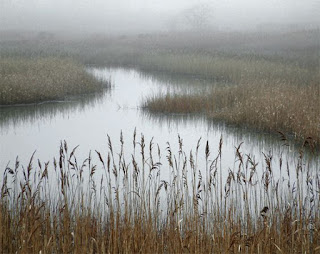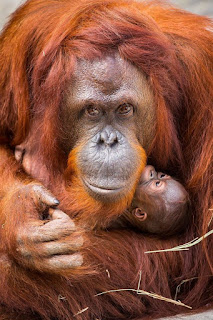 |
| Lemur leaping with young. (Eden) |
- No endurance. This species is great in bursts of activity, but they tire easily. They can outrun anyone in a 20-yard dash, but run out of steam before they reach 200 yards.
- No throwing things. They don't have the right kind of arms, but it goes further than that...
- No tool sense. Unlike humans, these people don't incorporate tools mentally as extensions of their own body.

(Ravendark Creations)
When you pick up a tool you've never used before (a pair of tongs, for example) you're focused on how the tool feels in your hand, how to operate the tongs themselves. Once it feels comfortable, you start using the tongs to manipulate other objects. (Try asking a person with tongs to touch something; see if they touch it with the tongs or with their fingers.)
This tree-dwelling species has some manual dexterity, but not the mindset to manipulate things with tools. For them, using a tool on an object is like...cutting a piece of paper with a pair of scissors tied to the end of a pair of pool cues. You might be able to do it, but why?
Some of their features are more helpful:
 |
| Flying squirrel. |
- Gliding from tree to tree, using skin that stretches from arm to leg. This lets them move through the forest canopy very quietly while following prey below.
- Sharp teeth and claws. When they decide to strike, they come down from above and strike fast.
- Imitating sounds. Some humans are pretty good at making the sound of a dove or a turkey. These people of the woods are the best mimics, luring in prey with their own call.
- Patience, allowing them to spend long periods of time waiting quietly for an opportunity to arise.
(I'm using the terms "person" and "people" for any of the four intelligent, most relatable species of this setting.)
We've been calling these tree goblins, though it's admittedly an ill-fitting name. Having an English name is usually a helpful starting point, but in this case the name might be more of a hindrance.
What would you call them?









